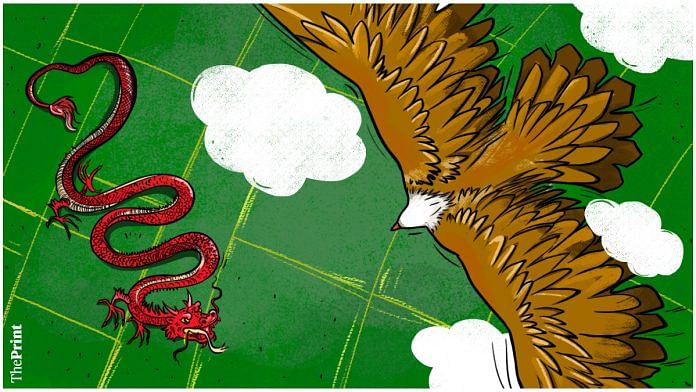The Chinese economy presents a strange picture of pallid lassitude. While much of the world grapples with inflation, Beijing faces the opposite: Deflation in producer prices, and low consumer price inflation. While central banks elsewhere have been jacking up interest rates, their Chinese counterpart has been easing up on monetary policy.
While there is a stock-market boom in countries like India, the Shanghai Composite index is lower than it was in 2009! In a manufacturing powerhouse, industrial production is lower than the pre-Covid level four years earlier. Credit growth too is falling, as is the yuan against the dollar. All this has sapped confidence in the narrative of economic recovery after a slack 2022.
Growth last calendar year was expected to be 5.5 per cent, but fell short at 3 per cent — the lowest in recent memory if one leaves out the Covid-hit 2020. This year’s official growth target is 5 per cent, but the outlook seems more uncertain with every passing month, despite the low base.
Commentators point to the lack of domestic demand and of private investment. The latter has fallen for the first time in a decade (barring the quarter at the start of the Covid pandemic).
New housing in January-April fell by more than 20 per cent from the level a year earlier. On the trade front, exports have fallen in six of the last eight months. Imports too are down. An economy that is substantially driven by the property market and exports sees both those engines idling. The general lack of tempo means that the inflation target of 3 per cent is also likely to be undershot.
Most observers had expected a growth burst after Covid restrictions were lifted early in the year. And indeed growth in the first quarter of the calendar year did pick up to 4.5 per cent. But adjusting for the fact that the corresponding quarter of the previous year had been hit by Covid lockdowns and disruptions, the underlying growth rate is estimated to be no more than 2.6 per cent.
Meanwhile, unemployment for the young (16-24 age group) has soared to nearly 20 per cent. And yet, the Chinese authorities seem reluctant to provide any fiscal boost to demand.
Some, not all, of these could be cyclical issues. That does not mean an absence of long-term, structural constraints: China’s shrinking population in the working-age bracket, massive public and quasi-public debt, and over-construction in housing — all of these, it has been widely anticipated for some time, would act as brakes on the economy.
To these must be added poor project choices with low returns on capital, even as a crackdown on polluting industries has added to the structural changes required. Meanwhile, the long-talked-about shift from capital investment to private consumption as the primary driver of growth has failed to materialise. The immediate shortage of consumer demand underlines that failure.
It can’t help that the Western world is looking to de-risk itself by reducing its dependence on Chinese manufacturing. While any meaningful de-coupling is not possible, given China’s position as the world’s second-largest economy, its biggest manufacturing power, and also its largest exporter, the de-risking moves could mean that more foreign investment will be headed to other countries. The strategic shutting of the door to Western technology adds another element of uncertainty to the story.
As a cautionary word, the death of the China story has been told many times in the past couple of decades — prematurely, as with Mark Twain. This time too, a modest bounce back cannot be ruled out. Many overseas observers continue to believe that the 5 per cent official growth target for 2023 will eventually be achieved. That would mean close to double the global growth rate for the year, with no other large economy at China’s level of per capita income doing better.
Still, the earlier facile assumption that China would become larger than the US as an economy, and eventually challenge Western strategic dominance, may need to be revised. What seems likely now is a re-balancing of global power, rather than a substantial power shift.
By special arrangement with Business Standard.
Also read: Talk of yoga & diaspora is fine, but hard power is where Indo-US relationship really shines



